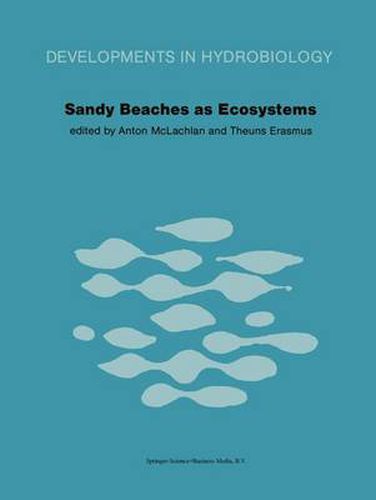Sandy Beaches as Ecosystems: Based on the Proceedings of the First International Symposium on Sandy Beaches, held in Port Elizabeth, South Africa, 17-21 January 1983

Sandy Beaches as Ecosystems: Based on the Proceedings of the First International Symposium on Sandy Beaches, held in Port Elizabeth, South Africa, 17-21 January 1983
This title is printed to order. This book may have been self-published. If so, we cannot guarantee the quality of the content. In the main most books will have gone through the editing process however some may not. We therefore suggest that you be aware of this before ordering this book. If in doubt check either the author or publisher’s details as we are unable to accept any returns unless they are faulty. Please contact us if you have any questions.
What sight is more beautiful than a high-energy beach facing lines of rolling white breakers? What battleground is more ferocious than where waves and sand meet? What environment could be more exciting to study than this sandy interface between sea and land? And yet how much do we know about sandy beaches? Open sandy beaches are amongst the most neglected fields of scientific study in the coastal environment. This situation exists despite their great extent along most temperate and tropical coastlines and their value as recreational areas and buffer zones against the sea. The traditional oceanographer does not venture into the surf zone while the terrestrial ecologist stops short at the high water mark. Only a few coastal engineers have grappled with the problem of sand and sediment movement as it influences their construction of harbours and pipelines. The marine biologist on the other hand has regarded estuaries, coral reefs and rocky shores, obviously teeming with life, as more fruitful areas for study than the apparently poor animal life on sandy beaches. Sandy beaches have therefore tended to become a scientific no man’s land. Over the last decade this situation has begun to improve. Recent work on high-energy beaches has revealed that they may in fact be rich and productive and fertile areas for study. It has even been suggested that beaches and their adjacent surf zones may constitute viable marine ecosystems.
This item is not currently in-stock. It can be ordered online and is expected to ship in 7-14 days
Our stock data is updated periodically, and availability may change throughout the day for in-demand items. Please call the relevant shop for the most current stock information. Prices are subject to change without notice.
Sign in or become a Readings Member to add this title to a wishlist.


